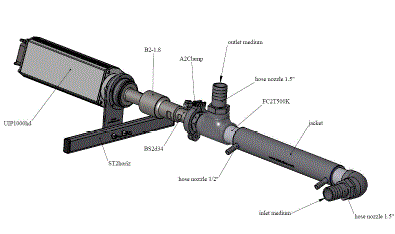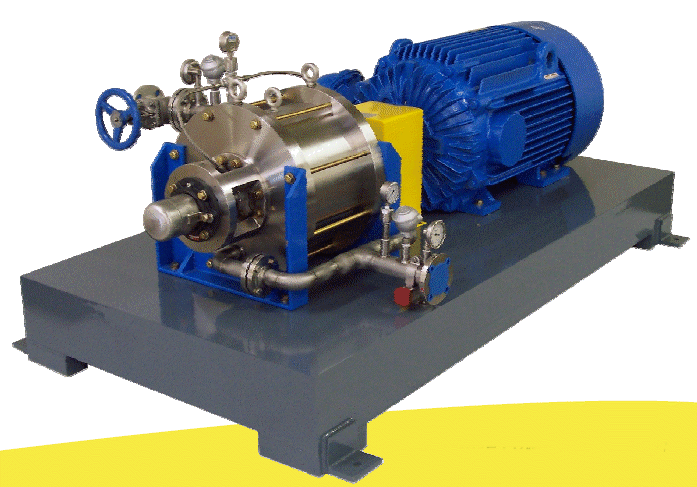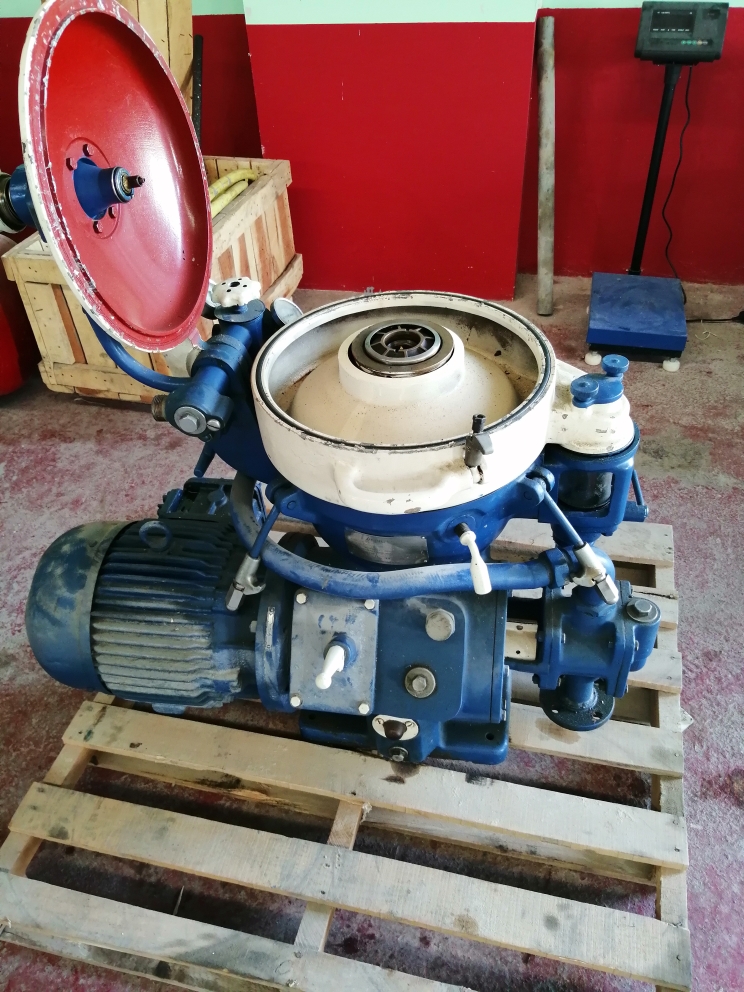 |
Satish Lele lelebiodzl@gmail.com |
PRODUCTION of BIODIESEL
1,000 Liters of BIODIESEL per Batch
PRODUCTION STEP 1
Acid catalyzed Esterification reaction for Acid Oil having high FFA:
This step is required if FFA of oil is more than 3%. It may not be required if oil is Palm Stearin or Animal Tallow.
Quantity of Raw Materials:
Acid Oil: 3200 Liters.
Methanol (99% pure): 240 Liters.
Sulphuric Acid (98% pure): 25 liters.
First step for production of biodiesel from high FFA Acid Oil is Esterification. First measured quantity of Acid Oil is preheated in Oil Feed Tank, if it has solid content. It may be a semisolid material at room temperature (around 30oC). The Acid Oil is heated to 50oC and the preheated Acid Oil is then transferred into the Pretreatment Tank. Measured quantity of Methanol is taken in Methanol Feed Tank and then transferred into the Pretreatment Tank. The contents of Pretreatment Tank are thoroughly mixed by running agitator and sulphuric acid is added as catalyst to Pretreatment Tank, very slowly (It will take up to 30 minutes).
It is then heated to reaction temperature of 50oC in 30 minutes. Methanol boils at this temperature and will rise to condenser. Methanol will be condensed in condenser and recycled. It takes 24 hours for this reaction to complete. This step of acid catalyzed esterification, reduces the high FFA content of Acid Oil to less than 2%. It will feed to 3 batches of BioDiesel Reactor.
Optional: The Acid Catalyst Column (having acid bonded resin beads) may be used to convert preheated Acid Oil in the presence of methanol to reduce the free fatty acid (FFA) of Acid Oil by converting it into fatty acid methyl ester (FAME). In this case sulphuric acid is not added to reaction mixture. It may take much longer due to low reactivity of acid bonded resin.
Alkali catalyzed Transesterification reaction
Analysis of Oil to check Free Fatty Acid (FFA) content: Oil obtained after first step (after reduction of high FFA to 1 to 3% in Pretreatment Tank) or Oil with low FFA (Palm Stearin or Animal Tallow) should be checked for its FFA content.
Materials for Titration:
Isopropyl alcohol 99%+ pure
Distilled or de-ionized water
Phenolphthalein solution: It should not be more than a year old, and should be protected from strong light. You use phenolphthalein solution to get end point.
Preparation of KOH solution: Dissolve 1 gram of KOH in 1 liter of distilled or de-ionized water (to prepare a 0.1% KOH solution).
Procedure of Analysis: In a small beaker, dissolve 1 ml of dewatered oil in 10 ml of pure isopropyl alcohol (or acetone). Warm the beaker gently by standing it in hot water, stir until all the oil dissolves in isopropyl alcohol (or acetone) and the mixture turns clear. Add 2 drops of phenolphthalein solution. Using a burette, add 0.1% KOH solution, drop by drop to the oil + isopropyl alcohol (or acetone) + phenolphthalein solution, shaking all the time, until the colour of solution, turns pink (magenta) and stays pink (magenta) for 10 seconds.
To calculate amount of KOH required as catalyst, note the number of milliliters of 0.1% KOH solution you added, and add 5. (Example: If colour change is after adding 5 ml, add 5 to it. You will need, (5+5) 10 gms of KOH per liter of oil as Transesterification reaction catalyst.) This is the amount in grams of KOH you will need per liter of oil.
Quantity of Raw Materials for material from Pretreatment Tank (from first step)
Oil + Methanol + Acid Mixture: 1,100 Liters.
Methanol: 120 Liters.
KOH: As per calculation above + 13 kgs (for Neutralization of acid)
Quantity of Raw Materials for material from Methanol Feed Tank and Oil Feed tank (no first step)
Oil: 1,050 Liters.
Methanol: 200 Liters.
KOH: As per calculation above.
The treated Acid Oil (by acid catalyzed esterification) or fresh Palm Stearin or Animal Tallow is considered as the raw material for transesterification process.
Measured quantity of Methanol is taken in Methanol Feed Tank and transferred to Biodiesel (cum Catalyst Preparation) Reactor. Required quantity of KOH is added to Biodiesel Reactor, and agitated for 30 minutes. KOH dissolves and reacts with methanol to for Potassium Methoxide (Which is actual catalyst. It is corrosive).
Alternatively use can use NaMethylate 35% solution in place of KOH. It is a clear, colourless to slightly yellowish, viscous liquid which is a solution of 30% NaOCH3 in H3COH.
If Palm Stearin or Animal Tallow is used as raw material, about 1,000 kilograms is weighed and added to Oil Feed Tank and heated in Oil Feed Tank (Its volume will be more than 1,000 liters). It may be solid material at room temperature (around 30oC). Palm Stearin or Animal Tallow is heated to 50oC to melt it. Measured quantity of oil in liters, is added to Biodiesel Reactor, by difference in level in level-gauge on Oil Feed Tank.

 Reaction: It is mixed by agitator for few minutes and then circulated continuously through ultrasonic mixer or shock wave generator. It is then heated to reaction temperature of 50oC. Methanol evaporates at this temperature and will rise to Biodiesel Condenser. Methanol will be condensed and recycled. Continue reaction for initial reaction time of 60 min, and then stop agitation and heating. Trans-esterification is carried out in presence of methanol and catalysts, which yields raw biodiesel (methyl ester) and glycerin as principal products along with the soap, catalyst and methanol. This step is followed by bulk separation of the two distinct phases Biodiesel (methyl ester) and Glycerin. Allow it to settle, and remove as much of Glycerin as possible to glycerin purification tank. Start heating and agitation and continue for 3 hours. Then stop agitation and heating, and transfer contents to settling tank.
Reaction: It is mixed by agitator for few minutes and then circulated continuously through ultrasonic mixer or shock wave generator. It is then heated to reaction temperature of 50oC. Methanol evaporates at this temperature and will rise to Biodiesel Condenser. Methanol will be condensed and recycled. Continue reaction for initial reaction time of 60 min, and then stop agitation and heating. Trans-esterification is carried out in presence of methanol and catalysts, which yields raw biodiesel (methyl ester) and glycerin as principal products along with the soap, catalyst and methanol. This step is followed by bulk separation of the two distinct phases Biodiesel (methyl ester) and Glycerin. Allow it to settle, and remove as much of Glycerin as possible to glycerin purification tank. Start heating and agitation and continue for 3 hours. Then stop agitation and heating, and transfer contents to settling tank.
 Separation: The product is allowed to cool in settling tank, which results in separation into two layers. After 24 hour of separation time, the upper phase consists of Biodiesel + Methanol, while the lower layer contains the Glycerin + Methanol. Settled glycerin layer is pumped to glycerin purification tank for recovery of methanol.
Separation: The product is allowed to cool in settling tank, which results in separation into two layers. After 24 hour of separation time, the upper phase consists of Biodiesel + Methanol, while the lower layer contains the Glycerin + Methanol. Settled glycerin layer is pumped to glycerin purification tank for recovery of methanol.
Alternatively separation is also done using a centrifuge. These are offered by Machine Marine Centrifuge, Mr. Akil Bhimani, (Technical Cum Sales), M: 9429141486, office: Block 468/B, Prabhudas Talav Road, Bhavnagar, Gujarat, India. Ware House : Plot no.205, Vibrant industrial park, Bhavnagar, 364001. These are refurbished centrifuges from old ships.
After this only upper phase consisting of biodiesel remains in settling tank. The separated biodiesel (methyl ester) phase is then passed through specialized ion exchange resin column/s to remove impurities like glycerin, soaps and traces of catalyst, along with ionic salts to produce pure Biodiesel. It is done in Dry Washing Column where dry washing takes place. All impurities are removed from BioDiesel. It is then pumped to Biodiesel Purification Tank to remove excess methanol in the biodiesel.
Dry Washing: Specially processed Resin Beads are used is for this. The product is used in columns to polish contaminants derived in biodiesel production to meet European / US standards. It is primarily used to remove glycerin, soaps, cation salts (some derived from the esterification process catalyst), and water. It has a very limited capacity for methanol removal and hence it is best to ensure you achieve good demethylation after Dry Washing columns if you are to meet methanol limits / flash point defined in international standards for biodiesel. Since its introduction, Specially processed Resin Beads Columns have been installed in many small, medium and also large scale BioDiesel installations with considerable success and there are no product failures in service to date.
Resin Type : Strong acid cation exchange resin.
Matrix structure : Cross linked polystyrene.
Functional group : Sulfonic acid.
Physical form : Dry spherical beads.
Ionic form : Hydrogen.
Particle size : 0.4-1.2 mm.
Screen size : 16-40 U.S.S(wet)
Dry Weight capacity : 5.0 meq/gm (min).
Uniformity coefficient : 1.5 max.
Moisture content : 3% max.
Effective size : 500-600 microns.
Operating pH range : 0-14.
Solubility : Insoluble in all common solvent.
Oligomer : 50 ppm max
These are available as Super Sacks of 1000 liters, MS drums 180 liters, or HDPE lines Bags 25 liters. Detailed information is given in catalogs of manufacturers of these resins.
Purification of BioDiesel: Dry washed BioDiesel is pumped to Biodiesel Purification Tank to remove excess methanol in the biodiesel. It is heated to 75oC when most of the methanol is removed from the BioDiesel Methanol mixture. Methanol vapours rise through Biodiesel Tower to Biodiesel Condenser and methanol is sent to Methanol Purification Tank for further purification. Heating is continued till there is no liquid flow seen in Flow Glass in liquid methanol pipe line. Biodiesel is then pumped to BioDiesel storage tank, for sale.
Purification of Glycerin: Settled glycerin in Settling Tank, is pumped to Glycerin Purification Tank to remove excess methanol in glycerin. It is heated to 75oC when most of the methanol is removed from the Glycerin Methanol mixture. Methanol vapours rise through Glycerin Tower to Glycerin Condenser and methanol is sent to Methanol Purification Tank for further purification. Heating is continued till there is no liquid flow seen in Flow Glass in liquid methanol pipe line. Crude glycerin is then pumped to glycerin storage tank, for sale.
Purification of Methanol: Liquid methanol coming from earlier recovery units goes to Methanol Purification Tank. It is heated to 65oC when most of the methanol is removed from Dilute Methanol mixture. (Methanol does not form azeotrope with water). Methanol vapours rise through Methanol Tower to Methanol Condenser. Heating is continued till there is no liquid flow seen in Flow Glass in liquid methanol pipe line. Residual material, in Methanol Purification Tank, mostly water, is then drained to Effluent treatment plant.
